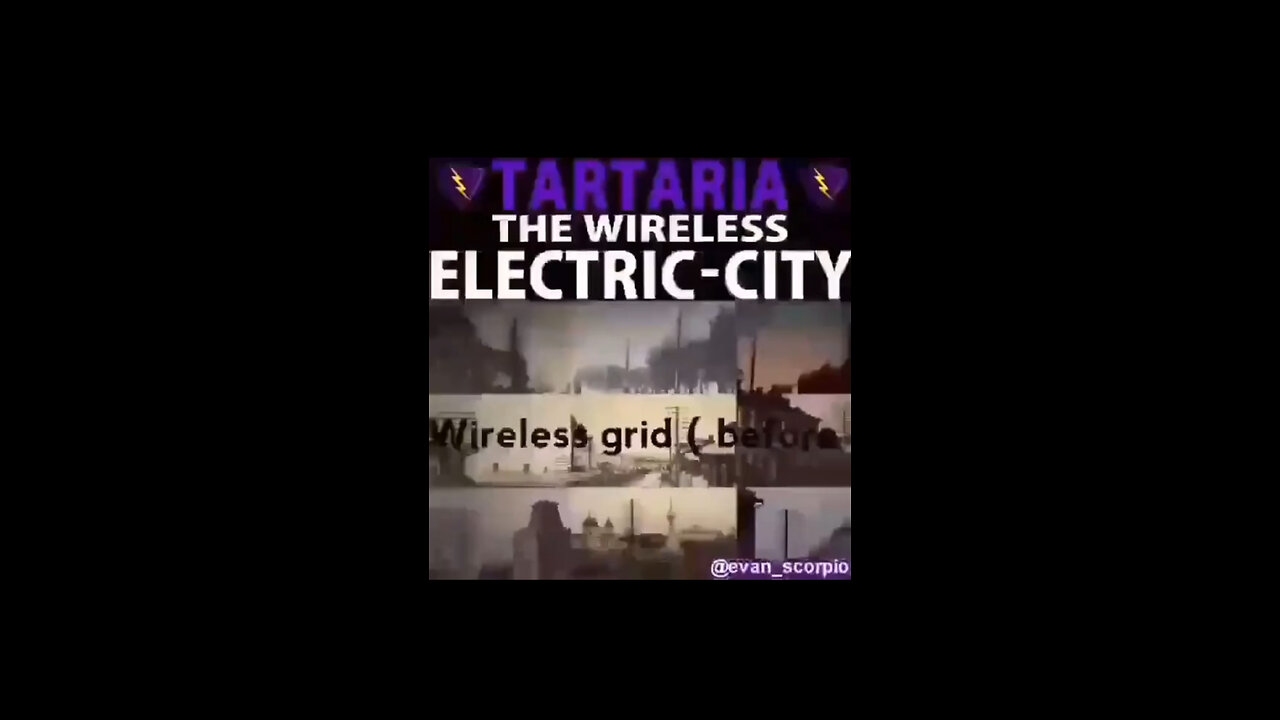Premium Only Content

The Tartarian Theory: A Forgotten Civilization’s Hidden Legacy
The Tartarian theory suggests the existence of a highly advanced and widespread civilization called Tartaria, believed to have thrived in antiquity. This civilization allegedly possessed sophisticated technologies and architectural expertise, much of which has been obscured or erased from mainstream historical records.
Advanced Technologies and Architecture
Architectural Mastery:
Tartarian architecture is characterized by its grandeur and complexity, with structures such as star forts, intricate buildings, and monumental constructions. These designs often exhibit advanced geometric precision and alignments that hint at a deep understanding of energy harnessing and distribution.
Resonant Energy Devices:
Central to the Tartarian theory is the use of resonant energy devices. These devices, including bells and geometric structures, were believed to harness natural frequencies and vibrations. They served multiple purposes, such as energy generation, environmental control, and healing.
Multifunctional Structures and Their Purposes
Star Forts:
Star forts are iconic in the Tartarian theory, featuring star-like patterns with complex bastions and ravelins. These forts were strategically placed at key energy nodes or ley lines, enabling them to act as energy hubs that amplified and directed natural energies. Their design also provided strong defensive capabilities against invaders.
Pyramids and Obelisks:
Pyramids and obelisks played a crucial role within the Tartarian energy network. These structures served as focal points, harnessing and directing the energy generated by other technologies. Their placement and design enhanced the efficiency and reach of the Tartarian energy grid.
Environmental Control and Healing
Weather Manipulation:
Tartarians may have had the ability to manipulate weather patterns through their advanced technologies. By influencing atmospheric frequencies, they could ensure stable and favorable climate conditions, providing significant agricultural and strategic advantages.
Vibrational Healing:
The frequencies produced by Tartarian devices were thought to have healing properties. By resonating with the natural frequencies of the human body, these technologies could promote physical and mental well-being, aligning with modern concepts of sound therapy.
Cymatic Resonance and Harmonic Influence
Cymatics:
The study of cymatics, which visualizes sound waves as geometric patterns, is integral to understanding Tartarian technologies. The patterns and vibrations created by these devices influenced their surroundings, maintaining harmonic balance and promoting health.
Harmonic Architecture:
Tartarian architecture incorporated principles of cymatic resonance, ensuring that structures amplified and distributed energy effectively. This harmonic influence contributed to the overall well-being of Tartarian society.
Historical Cover-Up and Rediscovery
Obscured History:
Much of Tartaria’s advanced knowledge and technologies were allegedly erased from mainstream historical records. The true purposes of their architectural and technological achievements have been obscured, often dismissed as mere military or decorative structures.
Modern Rediscovery:
Renewed interest in Tartaria has sparked a resurgence in research. Enthusiasts and researchers are re-examining historical sites, maps, and artifacts to piece together the lost history of this enigmatic civilization. This rediscovery offers new insights into the technological and architectural prowess of Tartaria.
Conclusion
The Tartarian theory presents a captivating narrative of a lost civilization that mastered advanced technologies and architectural design. By exploring the remnants of Tartaria’s influence and the potential cover-up of its history, we gain a deeper appreciation for the ingenuity and achievements of ancient civilizations. Whether viewed as historical fact or speculative fiction, the Tartarian theory continues to inspire curiosity and investigation into the mysteries of our past.
-
 29:51
29:51
Afshin Rattansi's Going Underground
18 hours agoJimmy Dore on Ukraine & WW3: Biden Wants a War that Trump CAN’T Stop, ONLY Hope is Putin’s Restraint
33.4K12 -
 LIVE
LIVE
Fresh and Fit
4 hours agoExposing WHO Killed JFK w/ Cory Hughes & Tommy Sotomayor
7,123 watching -
 LIVE
LIVE
Man in America
10 hours agoWHAT?! Trump & the Fed are DISMANTLING the Global Banking Cartel!? w/ Tom Luongo
483 watching -
 LIVE
LIVE
HELMET FIRE
56 minutes agoDEADROP IS BACK!
83 watching -
 UPCOMING
UPCOMING
I_Came_With_Fire_Podcast
6 hours agoLive Fire (No Exercise) with DAN NUNN!!!
2562 -
 1:57:20
1:57:20
Glenn Greenwald
6 hours agoBiden's Escalation Of The War In Ukraine With Scott Horton; Lee Fang On The Junk Food Industry Sabotaging RFK Jr.'s Plans & The Gaetz Situation | SYSTEM UPDATE #371
61.4K44 -
 LIVE
LIVE
Toitle
1 hour agoLet's Game | TOITLE HEADS, POKE OUT | WE BE GRINDIN
374 watching -
 LIVE
LIVE
Pepkilla
2 hours agoBlack ops 6 camo grinding ~
360 watching -
 1:02:24
1:02:24
Havoc
4 hours agoSurprise Album Drops | Stuck Off the Realness Ep. 20
21.5K -
 LIVE
LIVE
hockeymancb77
2 hours ago $0.92 earned2nd Rumble Stream!!! Friday night gaming! Come chat! Join the 7th man! Be Kind!
346 watching